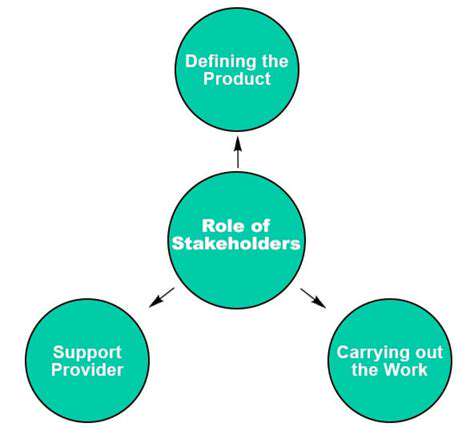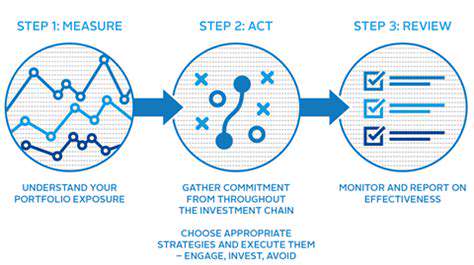Predictive Maintenance in Smart Building Systems
Challenges and Future Directions of PdM in Smart Buildings
Predictive Maintenance (PdM) in Smart Buildings: Data Acquisition Challenges
Collecting reliable and comprehensive data is crucial for effective PdM in smart buildings. Numerous sensors and devices generate vast amounts of data, often with varying formats and frequencies. Integrating these disparate data streams into a unified platform for analysis poses a significant technical hurdle. Furthermore, ensuring data quality, accuracy, and consistency across different systems and time periods requires robust data management and preprocessing strategies. This complexity can be exacerbated by the heterogeneity of building systems and equipment, making standardized data collection protocols essential.
Addressing the issue of data volume, velocity, and variety is essential. Smart building operators need to implement sophisticated data filtering and aggregation techniques to identify the most relevant information for PdM purposes. Data security and privacy concerns also need to be carefully considered to protect sensitive information related to building operations and occupancy.
Model Development and Training for PdM
Developing accurate and reliable predictive models for PdM in smart buildings requires addressing the specific characteristics of building systems. These systems often exhibit complex interactions and dependencies, making it challenging to isolate the factors influencing equipment performance. Additionally, the data used for model training might be limited or skewed, requiring careful data augmentation and handling of missing values to ensure robust model performance.
The sheer volume of data generated by smart buildings necessitates the use of advanced machine learning algorithms. Finding the optimal balance between model complexity and interpretability is key. Furthermore, ongoing model retraining with new data is essential for maintaining accuracy and adapting to evolving building conditions.
Integration with Building Management Systems (BMS)
Seamless integration of PdM functionalities with existing building management systems (BMS) is critical for practical implementation. The BMS acts as the central nervous system of the building, providing real-time information about building systems and operational parameters. Integrating PdM algorithms into the BMS allows for proactive maintenance scheduling and reduces downtime.
Real-Time Monitoring and Alerting Capabilities
Real-time monitoring of critical building equipment and systems is essential for timely intervention. Implementing systems that automatically detect anomalies and generate alerts based on predicted failures allows for proactive maintenance. The ability to quickly identify potential issues and trigger appropriate responses, such as notifying maintenance personnel or initiating automated repairs, is vital for minimizing downtime and ensuring operational efficiency.
Developing robust and reliable alerting systems that prioritize critical issues over minor anomalies is key to preventing unnecessary disruptions to building operations. These systems also need to be user-friendly and intuitive to ensure effective communication and action.
Addressing the Human Element in PdM
Despite the significant potential of PdM, the human element remains crucial in the implementation and management of these systems. Training and educating building operators and maintenance personnel on how to effectively use PdM tools and interpret the results is essential. Clear communication channels and protocols for handling alerts and maintenance requests are necessary to ensure smooth operation.
Economic Justification and Return on Investment (ROI)
Demonstrating the economic benefits of PdM implementation in smart buildings is crucial for securing buy-in and funding. Calculating the expected return on investment (ROI) by quantifying potential cost savings associated with reduced downtime, maintenance expenses, and energy consumption is essential. This requires careful analysis of historical data and realistic projections of future performance.
Scalability and Adaptability for Different Building Types
PdM solutions need to be scalable and adaptable to cater to the diverse range of building types and sizes. Developing a modular and flexible architecture that can be easily customized and integrated with different building management systems will enable broader adoption. Addressing the unique needs of specific building types, such as healthcare facilities or data centers, will enhance the effectiveness of PdM strategies.
Read more about Predictive Maintenance in Smart Building Systems
Hot Recommendations
- AI in Property Marketing: Virtual Tours and VR
- Water Management Solutions for Sustainable Real Estate
- IoT Solutions for Smart Building Energy Management
- Sustainable Real Estate: Building a Greener Tomorrow
- Sustainable Real Estate: From Concept to Community
- AI Driven Due Diligence for Large Scale Developments
- Real Estate Sector and Global Climate Agreements
- Smart Buildings: The Key to Smarter Property Management
- Zero Waste Buildings: A Sustainable Real Estate Goal
- Understanding Climate Risk in Real Estate Financing











